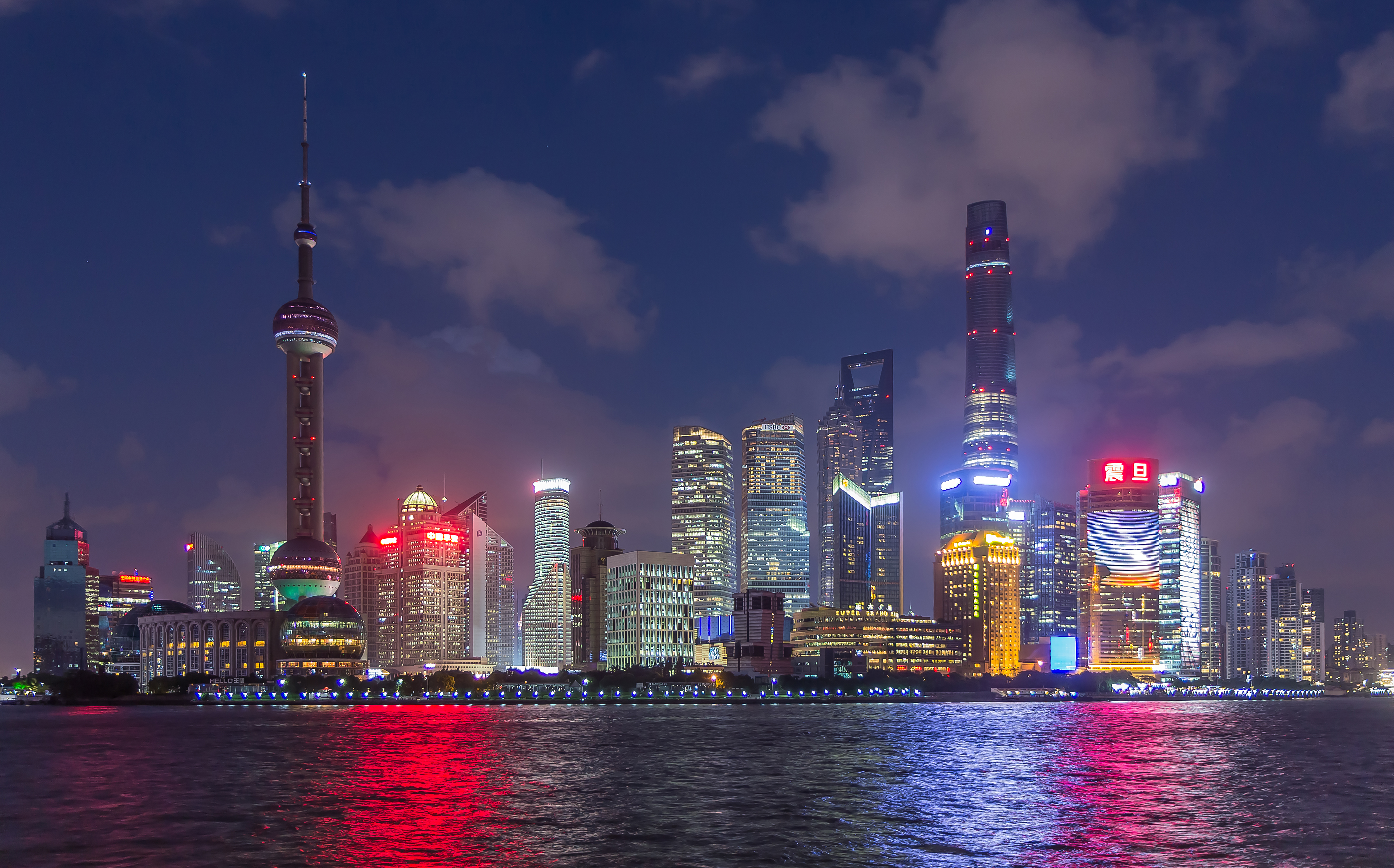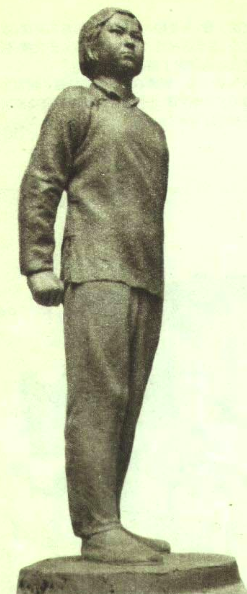|
Red Scarf Park
Honglingjin Park () is a public park in Beijing. The park, designated a national AAA scenic spot, lies at the junction of East 4th Ring Road and Chaoyang North Road, to the northeast of Honglingjin Bridge, about 10 kilometers from the center of the city. It is the only theme park for children named "Red scarf" in the country. It is a place for patriotic and popular science education for teenagers. Built in 1958, now it covers an area of , of which are covered by water, and has a 96% greenery coverage rate. The lawn surrounding the lake is dotted with trees and flowers. Major attractions are a theme square named "Song of the Red Scarf", Ginkgo Square, a children's playground, the Practical Road Safety Education Base, and several groups of artistic sculptures. Every year the park holds a scientific garden party on June 1 and a cultural festival for twins in Beijing on October 1. Attractions *"Song of the Red Scarf" theme square: This square lies in the west of the squares zone n ... [...More Info...] [...Related Items...] OR: [Wikipedia] [Google] [Baidu] |
Chaoyang District, Beijing
Chaoyang District () is a core district of Beijing. It borders the districts of Shunyi to the northeast, Tongzhou to the east and southeast, Daxing to the south, Fengtai to the southwest, Dongcheng, Xicheng and Haidian to the west, and Changping to the northwest. Chaoyang is home to the majority of Beijing's many foreign embassies, the well-known Sanlitun bar street, as well as Beijing's growing central business district. The Olympic Green, built for the 2008 Summer Olympics, is also in Chaoyang. Chaoyang extends west to Chaoyangmen on the eastern 2nd Ring Road, and nearly as far east as the Ximazhuang toll station on the Jingtong Expressway. Within the urban area of Beijing, it occupies , making it the central city's largest district, with Haidian second. As of 2005, Chaoyang had a total population of 3,642,000, making it the most populous district in Beijing. The district has jurisdiction over 22 subdistrict offices and 20 area offices. Chaoyang is also home to ... [...More Info...] [...Related Items...] OR: [Wikipedia] [Google] [Baidu] |
Beijing
} Beijing ( ; ; ), alternatively romanized as Peking ( ), is the capital of the People's Republic of China. It is the center of power and development of the country. Beijing is the world's most populous national capital city, with over 21 million residents. It has an administrative area of , the third in the country after Guangzhou and Shanghai. It is located in Northern China, and is governed as a municipality under the direct administration of the State Council with 16 urban, suburban, and rural districts.Figures based on 2006 statistics published in 2007 National Statistical Yearbook of China and available online at archive. Retrieved 21 April 2009. Beijing is mostly surrounded by Hebei Province with the exception of neighboring Tianjin to the southeast; together, the three divisions form the Jingjinji megalopolis and the national capital region of China. Beijing is a global city and one of the world's leading centres for culture, diplomacy, politics, finance, busi ... [...More Info...] [...Related Items...] OR: [Wikipedia] [Google] [Baidu] |
Tourist Attraction Rating Categories Of China
Tourism in China is a growing industry that is becoming a significant part of the Chinese economy. The rate of tourism has expanded over the last few decades since the beginning of reform and opening-up. The emergence of a newly rich middle class and an easing of restrictions on movement by the Chinese authorities are both fueling this travel boom. China has become one of world's largest outbound tourist markets. According to Euromonitor International, economic growth and higher incomes in nearby Asian countries will help China to become the world's number one tourist destination by 2030. China ranked second in the world for travel and tourism's contribution to GDP in 2022 ($814.1 billion), and first in the world for travel and tourism's contribution to employment (66,086,000 jobs in 2014). Tourism, based on direct, indirect, and induced impact, accounted for 9.3 percent of China's GDP in 2013. In 2017, the total contributions of China's Travel and Tourism sector made up 11% of ... [...More Info...] [...Related Items...] OR: [Wikipedia] [Google] [Baidu] |
4th Ring Road (Beijing)
The 4th Ring Road () is a controlled-access expressway ring road in Beijing, China which runs around the city, with a radius of approximately from city centre. The total length of the road is . There are 147 bridges and viaducts that run the length of the Ring Road. The first section, the northern corridor, was completed in preparation for the 1990 Asian Games. The Ring Road was 'enclosed' in a full circle in June 2001, with standard controlled-access expressway throughout. Route The 4th Ring Road runs within the confines of the city of Beijing, more like a rectangle than a circle. The route travels past: Siyuan Bridge - Chaoyang Park Area - Sihui - Sifang Bridge - Shibalidian - Dahongmen - Majialou - Yuegezhuang Bridge - Fengtai Area - Sijiqing Area - Zhongguancun Area - Jianxiang - Asian Games Village Area - Wanghe Bridge - Siyuan Bridge The entire express road is complete and open to traffic. History Already in the early 1990s, the northern stretch of the 4t ... [...More Info...] [...Related Items...] OR: [Wikipedia] [Google] [Baidu] |
Red Scarf
The red scarf is a neckerchief worn by young pioneers of several countries during the communist era. In the Soviet Union it was known as ''pionerskiy galstuk'' (пионерский галстук, i. e. pioneer's neckerchief), in Vietnam as ''khăn quàng đỏ'' (red scarf), in China as ''hóng lǐngjīn'' (紅領巾/红领巾,red scarf), in Cuba as ''pañoleta roja'' (red scarf), and in Hungary as ''úttörőnyakkendő'' (pioneer's neckerchief). Blue scarves were also used by youngsters before coming of age to wear the red one, and are still seen in some countries. Background It remains in use by the young pioneer organizations of China, Vietnam, North Korea, and Cuba, and — unofficially, on occasions — in many other countries, such as Russia, Venezuela, Zimbabwe, Belarus, Ukraine, Finland etc. In China, the scarf is emblematic of blood of revolutionary Red Guards, as recalled in Red Scarf Park and the title of Red Scarf Girl by Ji-li Jiang about her experiences during t ... [...More Info...] [...Related Items...] OR: [Wikipedia] [Google] [Baidu] |
Lei Feng
Lei Feng (18 December 194015 August 1962) was allegedly a soldier in the People's Liberation Army who was the object of several major Propaganda in China, propaganda campaigns in China. The most well-known of these campaigns in 1963 promoted the slogan, "Follow the examples of Comrade Lei Feng." Lei was portrayed as a model citizen, and the masses were encouraged to emulate his selflessness, modesty, and devotion to Mao Zedong. After Death of Mao Zedong, Mao's death, state media continued to promote Lei Feng as a model of earnestness and service, and his image still appears in popular forms such as on T-shirts and memorabilia. The biographic details of Lei Feng's life, and especially his diary, supposedly discovered after his death, are generally believed to be propaganda creations; even the historicity of Lei Feng himself is sometimes questioned.John Fraser, ''The Chinese: portrait of a people'' (William Collins & Sons, 1980): "Lei Feng is an invention of the propaganda depa ... [...More Info...] [...Related Items...] OR: [Wikipedia] [Google] [Baidu] |
Liu Hulan
Liu Hulan (刘胡兰, 1932–1947) was a young female spy during the Chinese Civil War between the Kuomintang and the Communist Party. She was born in Yunzhouxi village, in the Wenshui County of the Shanxi province. She joined the Communist Party in 1946 and soon after joined an association of women working in support of the Liberation Army. She was actively involved in organizing the villagers of Yunzhouxi in support of the Communist Party of China. Her contributions involved a wide range of activities, such as supplying food to the Eighth Liberation Army, relaying secret messages, and mending boots and uniforms. Biography On October 8, 1932, Ms. Liu Hulan was born in a middle-class peasant family in Yunzhou West Village, Shanxi Province. In January 1945, Liu Hulan participated in the movement of seizing gain by the Western Union and loaded grain with the revolutionaries. In October 1945, Hulan carried her family to Guanjiabao village and participated in the training cours ... [...More Info...] [...Related Items...] OR: [Wikipedia] [Google] [Baidu] |
Ginkgo Biloba
''Ginkgo biloba'', commonly known as ginkgo or gingko ( ), also known as the maidenhair tree, is a species of tree native to China. It is the last living species in the order Ginkgoales, which first appeared over 290 million years ago. Fossils very similar to the living species, belonging to the genus ''Ginkgo'', extend back to the Middle Jurassic approximately 170 million years ago. The tree was cultivated early in human history and remains commonly planted. Ginkgo leaf extract is commonly used as a dietary supplement, but there is no scientific evidence that it supports human health or is effective against any disease. Etymology The genus name is regarded as a misspelling of the Japanese pronunciation ''gin kyo'' for the kanji 銀杏 meaning "silver apricot", which is found in Chinese herbology literature such as (Daily Use Materia Medica) (1329) and ''Compendium of Materia Medica'' published in 1578.T. Hori, A historical survey of Ginkgo biloba based on Japanese and Ch ... [...More Info...] [...Related Items...] OR: [Wikipedia] [Google] [Baidu] |
Carousel
A carousel or carrousel (mainly North American English), merry-go-round (List of sovereign states, international), roundabout (British English), or hurdy-gurdy (an old term in Australian English, in South Australia, SA) is a type of amusement ride consisting of a rotation, rotating circular platform with seats for riders. The "seats" are traditionally in the form of rows of wooden horses or other animals mounted on posts, many of which are moved up and down by gears to simulate Horse gallop, galloping, to the accompaniment of Music loop, looped circus music. Carousels are commonly populated with horses, each horse weighing roughly 100 lbs (45 kg), but may include a variety of mounts, for example pigs, zebras, tigers, or mythological creatures such as dragons or unicorns. Sometimes, chair-like or bench-like seats are used, and occasionally mounts can be shaped like aeroplanes or cars. The names ''carousel'' and ''merry-go-round'' are also used, in varying dialects, to ... [...More Info...] [...Related Items...] OR: [Wikipedia] [Google] [Baidu] |
Bumper Car
Bumper cars or dodgems are the generic names for a type of flat amusement ride consisting of multiple small electrically powered cars which draw power from the floor and/or ceiling, and which are turned on and off remotely by an operator. Bumper cars were not intended to be bumped, hence the original name "Dodgem." They are also known as bumping cars, dodging cars and dashing cars. The first patent for bumper cars was filed in 1921. Design The cars are commonly powered by one of three methods. The oldest and most common method, the Over Head System (OHS), uses a conductive floor and ceiling with opposing power polarities. Contacts under the vehicle touch the floor while a pole-mounted contact shoe touches the ceiling, forming a complete circuit. A newer method, the Floor Pick-Up (FPU) system, uses alternating strips of metal across the floor separated by insulating spacers, and no ceiling grid. The strips carry the supply current, and the cars are large enough so that the veh ... [...More Info...] [...Related Items...] OR: [Wikipedia] [Google] [Baidu] |
.jpg)







